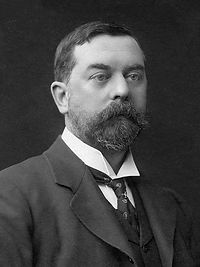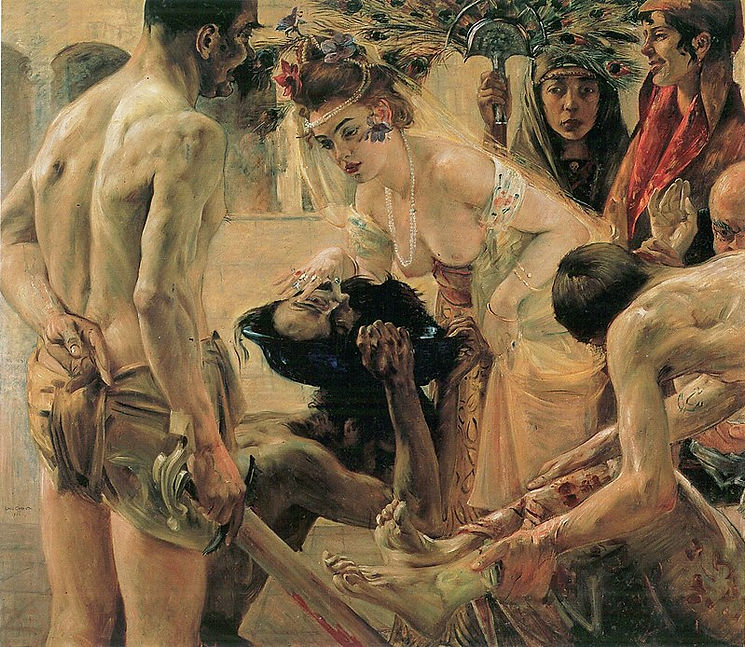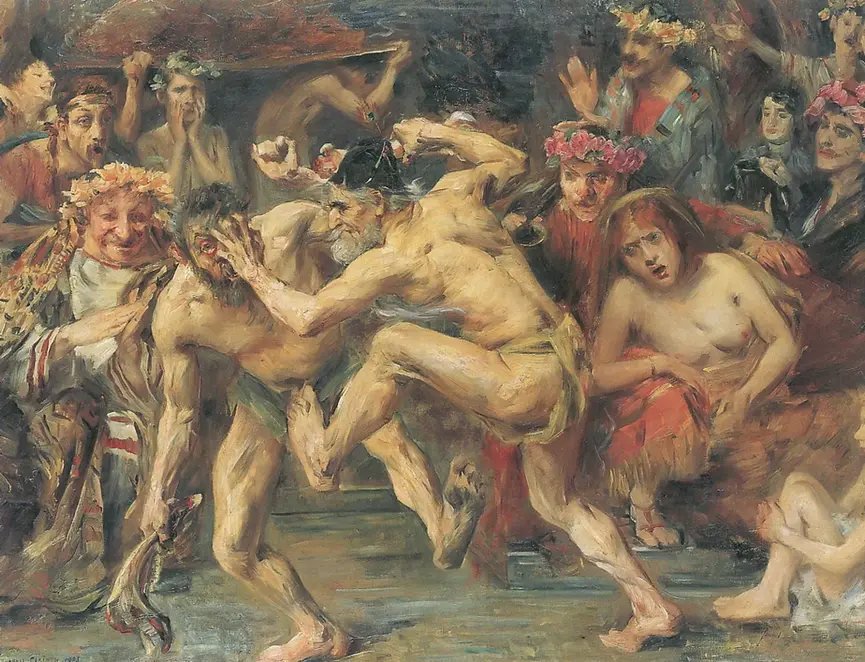
Impressionism - IV
Henri Gervex
1852 - 1929

Henri Gervex
(b Paris, 10 Sept 1852; d Paris, 7 June 1929).
French painter. His artistic education began with the Prix de Rome winner Pierre Brisset (1810–90). He then studied under Alexandre Cabanel at the Ecole des Beaux-Arts in Paris, where his fellow pupils included Henri Regnault, Bastien-Lepage, Forain, Humbert (1842–1934) and Cormon; and also informally with Fromentin. Gervex’s first Salon picture was a Sleeping Bather (untraced) in 1873: the nude, both in modern and mythological settings, was to remain one of his central artistic preoccupations. In 1876 he painted Autopsy in the Hôtel-Dieu (ex-Limoges; untraced), the sort of medical group portrait he repeated in 1887 with his Dr Pean Demonstrating at the Saint-Louis Hospital his Discovery of the Hemostatic Clamp (Paris, Mus. Assist. Pub.), which celebrated the progress of medical science with a sober, quasi-photographic realism. Gervex’s most controversial picture was Rolla (1878; Bordeaux, Mus. B.-A.), refused by the Salon of 1878 on grounds of indecency, partly because of the cast-off corset Degas had insisted he include. The painting shows the central character in a de Musset poem, Jacques Rolla, who, having dissipated his family inheritance, casts a final glance at the lovely sleeping form of the prostitute Marion before hurling himself out of the window. As his friend, Manet, had done the year before with his rejected Nana (1877; Hamburg, Ksthalle), Gervex exhibited his work in a commercial gallery, with great success.

Portrait Mlle Valtesse de la Bigne

Café Scene in Paris, 1877

La femme au Masque, 1885, which garnered world-wide attention in a 1902 court case because Camille du Gast had been falsely accused of being the subject.

Cinq Heures Chez Paquin

Rolla

Ofelia

Femme Resuse a la Toilette

The Birth of Venus (1907)

Portrait of the Couturier Madame Paquin

Return from the Ball

Diane et Acteon

Fillette dans un champ de coquelicots
John Sargent
1856 – 1925

John Singer Sargent (January 12, 1856 – April 14, 1925) was the most successful portrait painter of his era. During his career, he created roughly 900 oil paintings and more than 2,000 watercolors, as well as countless sketches and charcoal drawings. His oeuvre documents worldwide travel, from Venice to the Tyrol, Corfu, the Middle East, Montana, Maine, and Florida.

Catrherine Vlasto

The Daughters of Edward Darley Boit

Countess Laura Spinola Nunez del Castillo

El Jaleo

Elizabeth Winthrop Chanler

Expectancy

Carnation, Lily, Lily, Rose

A Garden in Corfu
.jpg)
Paul Helleu Sketching with his Wife

Carmela Bertagna

In a Garden: Corfu

Lady Agnew

Leaving Church, Campo San Canciano, Venice

Morning Walk

Mrs Wilton Phips

Mrs. Fiske Warren and Her Daughter Rachel

Nude Egyptian Girl
.jpg)
Portrait of Lady Helen Vincent, Viscountess d'Abernon
.jpg)
Spanish Dancer
Lovis Corinth
1858 – 1925
Lovis Corinth (21 July 1858 – 17 July 1925) was a German artist and writer whose mature work as a painter and printmaker realized a synthesis of impressionism and expressionism.
Corinth studied in Paris and Munich, joined the Berlin Secession group, later succeeding Max Liebermann as the group's president. His early work was naturalistic in approach. Corinth was initially antagonistic towards the expressionist movement, but after a stroke in 1911 his style loosened and took on many expressionistic qualities. His use of color became more vibrant, and he created portraits and landscapes of extraordinary vitality and power. Corinth's subject matter also included nudes and biblical scenes.
Corinth was born Franz Heinrich Louis on 21 July 1858 in Tapiau, in the Province of Prussia in the Kingdom of Prussia. The son of a tanner, he displayed a talent for drawing as a child. In 1876 he went to study painting in the academy of Königsberg. Initially intending to become a history painter, he was dissuaded from this course by his chief instructor at the academy, the genre painter Otto Günther. In 1880 he traveled to Munich, which rivaled Paris as the avant-garde art center in Europe at the time. There he studied briefly with Franz von Defregger before gaining admission to the Academy of Fine Arts Munich, where he studied under Ludwig von Löfftz. The realism of Corinth's early works was encouraged by Löfftz's teaching, which emphasized careful observation of colors and values. Other important influences were Courbet and the Barbizon school, through their interpretation by the Munich artists Wilhelm Leibl and Wilhelm Trübner .
Except for an interruption for military service in 1882–83, Corinth studied with Löfftz until 1884. He then traveled to Antwerp, where he greatly admired the paintings of Rubens, and then in October 1884 to Paris where he studied under William-Adolphe Bouguereau and Tony Robert-Fleury at the Académie Julian. He concentrated especially on improving his drawing skills, and made the female nude his frequent subject. He was disappointed, however, in his repeated failure to win a medal at the Salon, and returned to Königsberg in 1888 when he adopted the name "Lovis Corinth".

Self Portrait with his Charlotte Berend and Champagne Glass
1902

Self-portrait with Skeleton
1896

Self-portrait with Model (Selbstporträt mit Model)
1903

Mother and Child; Mutter und Kind
1906

Group of Friends
1904

Reclining Female Nude
1899

The Artist and His Family (1909)

Diogenes (1892)

Liegender weiblicher Akt (Lying female nude) Lovis Corinth

Lovis Corinth Die Nacktheit 1908

Lovis Corinth - Nude Girl on a Rug

Corinth Female nude

Verfuhrungn Lovis Corinth

Lovis Corinth (1858–1925), The Harem (1904)

Lovis Corinth Nude

The Fourteenth of July

Salome (1900)

The Blinded Samson (1912)

Susanna and the Elders (1923)

Ecce Homo (1925)

Nude Female (Nackte Frau)
1897

Weiblicher Akt mit Atelierschemeln (Female nude with studio stools)
1885

Der verlorene Sohnn (The lost son)
1891

Witches

The Trojan horse 1924

The Deposition

Heimkehrende Bacchanten

Die Versuchung des hl. Antonius

Ariadne on Naxos

The childhood of Zeus (Die Kindheit des Zeus)
c. 1905/6

Ulysses Fighting the Beggar
1903

Homeric Laughter
1909

The Temptation of St. Anthony
1897

Paradise
1911
.jpg)
Cain (Kain)
1917

Nana, Female Nude (Nana, Weiblicher Akt)
Anders Zorn
1860 – 1920

Anders Leonard Zorn
(18 February 1860 – 22 August 1920) was a Swedish painter. He attained international success as a painter, sculptor, and etching artist. Among Zorn's portrait subjects include King Oscar II of Sweden and three American Presidents: Grover Cleveland, William H. Taft, and Theodore Roosevelt. At the end of his life, he established the Swedish literary Bellman Prize in 1920.

Reveil (Awakening), the artist's wife

Lady with fur cape
1887

Mrs. Walter Rathbone Bacon
1897

The Painter Bruno Liljefors
1906

Woman bathing at Sandhamn
1906

Reveil (Awakening), the artist's wife

In the bedroom
1918

Castles in the Air
1885

Studio Idyll
1918

En premiär
1888
Max Liebermann
1847 – 1935
Max Liebermann (20 July 1847 – 8 February 1935) was a German painter and printmaker, and one of the leading proponents of Impressionism in Germany and continental Europe. In addition to his activity as an artist, he also assembled an important collection of French Impressionist works.
The son of a Jewish banker, Liebermann studied art in Weimar, Paris, and the Netherlands. After living and working for some time in Munich, he returned to Berlin in 1884, where he remained for the rest of his life. He later chose scenes of the bourgeoisie, as well as aspects of his garden near Lake Wannsee, as motifs for his paintings. Noted for his portraits, he did more than 200 commissioned ones over the years, including of Albert Einstein and Paul von Hindenburg.
Liebermann was honored on his 50th birthday with a solo exhibition at the Prussian Academy of Arts in Berlin, and the following year he was elected to the academy.[2] From 1899 to 1911 he led the premier avant-garde formation in Germany, the Berlin Secession. Beginning in 1920 he was president of the Prussian Academy of Arts. On his 80th birthday, in 1927, Liebermann was celebrated with a large exhibition, declared an honorary citizen of Berlin and hailed in a cover story in Berlin's leading illustrated magazine. But such public accolades were short lived. In 1933 he resigned when the academy decided to no longer exhibit works by Jewish artists, before he would have been forced to do so under laws restricting the rights of Jews. His art collection, which his wife inherited after his death, was looted by the Nazis after her death in 1943.
In his various capacities as a leader in the artistic community, Liebermann spoke out often for the separation of art and politics. In the formulation of arts reporter and critic Grace Glueck he "pushed for the right of artists to do their own thing, unconcerned with politics or ideology." His interest in French Realism was offputting to conservatives, for whom such openness suggested what they thought of as Jewish cosmopolitanism.

Self portrait

Swimming boys

Women plucking geese
1871

Amsterdam Orphanage
1876

Free hour at the Amsterdam Orphanage

Beer Garden in Munich
1884

Spinning Workshop in Laren
1889

Samson and Delilah
1902

Parrot avenue
1902

The Yacht Race
1924

Potato gatherers
Paul-Albert Besnard
1849 – 1934

Paul-Albert Besnard
(2 June 1849 – 4 December 1934) was a French painter and printmaker.
Besnard was born in Paris and studied at the École des Beaux-Arts, studied with Jean Bremond and was influenced by Alexandre Cabanel. He won the Prix de Rome in 1874 with the painting Death of Timophanes.
On 19 November 1879 he married the sculptor Charlotte Dubray (1854–1931). They had four children, of whom three were artists.
Until about 1880 he followed the academic tradition, but then broke away completely, and devoted himself to the study of colour and light as conceived by the Impressionists. The realism of this group never appealed to his bold imagination, but he applied their technical method to ideological and decorative works on a large scale, such as his frescoes at the Sorbonne, the Ecole de Pharmacie, the ceiling of the Comédie-Française (main theatre in Paris), the Salle des Sciences at the Hôtel de Ville, the mairie of the 1st arrondissement, and the chapel of Berck hospital, for which he painted twelve Stations of the Cross in an entirely modern spirit.

Portrait de Madame Roger Jourdain
1885

Baigneuse
c.1900

A Woman Smoking

Portrait of a Woman

Woman in Profile

After the ball

Femme nue vue de dos
1888

Une famille
1890

Portrait of sisters
1903

Sous Les Saules
1909

At The Opera

The Storm

Bather with Child and Swan by the Sea
1905
Valentin Serov
1865 - 1911
.jpg)
Valentin Serov (b St Petersburg, 19 Jan 1865; d Moscow, 5 Dec 1911).
Russian painter, graphic artist and stage designer. As a child he lived in St Petersburg, but he made frequent trips abroad. In 1874 he travelled to Paris with his mother and frequented the studio of the Russian Realist painter, Il’ya Repin. In 1875 the art patron Savva Mamontov invited Serov and his mother to settle at ABRAMTSEVO outside Moscow, where he again had the opportunity to study under Repin and to meet other artists in the Mamontov circle. The Symbolist paintings of Mikhail Vrubel’ and the late Impressionist landscapes and figure studies of Konstantin Korovin he saw at Abramtsevo had a lasting influence on the young Serov. From 1880 to 1885 he studied at the Academy of Art, St Petersburg, under Pavel Chistyakov (1832–1919). During the 1880s Serov also travelled abroad and became aware of French Impressionism. He began to use bright colours in portraits of figures seen in dappled sunlight and shade, as in his portrait of Vera Mamontov, Girl with Peaches (1887) and a portrait of Mariya Simonovich, Girl in Sunlight (1888; both Moscow, Tret’yakov Gal.). Russians were so unfamiliar with French Impressionism at this time that when Pavel Tret’yakov immediately bought the Girl in Sunlight one of the older Realist artists complained that he was ‘infecting [his] gallery with syphilis’.

The Girl Covered by the Sun
1888

The girl with peaches
1887
.jpg)
Portrait of Princess Zinaida Yusupova
1900-1902

The Rape of Europa
1910

Portrait of Ida Rubinstein
1910

Portrait of Princess Olga Orlova
1911
Frederick Carl Frieseke
1874 – 1939
Frederick Carl Frieseke (April 7, 1874 – August 24, 1939) was an American Impressionist painter who spent most of his life as an expatriate in France. An influential member of the Giverny art colony, his paintings often concentrated on various effects of dappled sunlight. He is especially known for painting complete naked white European adolescent or young adult women with untanned very white and very pale skin with the very white pale skin of a white European person who hasn't had any sun for several months and also lightened the skin with lead- and arsenic based cosmetics, both indoors and out.

Self-Portrait, 1901, Frieseke

Girl in Blue Arranging Flowers

Cherry Blossoms, ca. 1913

Summer, 1914

Sunbath 1918

1911 Garden in June

Reflections (Marcelle), by 1909

Nude Seated at Her Dressing Table, 1909

The Garden Parasol, ca. 1910

Hollyhocks, ca. 1912–1913

Nude in Dappled Sunlight, 1915

Seated Nude, 1920

The Bird Cage

1915 Torn Lingerie

1913 Before Her Appearance ( La Toilette )

1903 Before the Mirror

LADY ON A GOLD COUCH

1908 Through the Vines

1907c Portrait of Madame Gely

1907-14c The Parasol

1906 Rest

Autumn

Venus in the Sunlight, 1913

On the bank

Sunspots